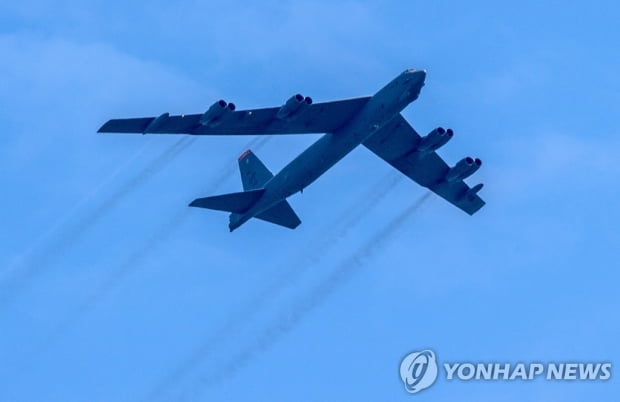Conducted into the skies of northwestern Europe from the 17th to the 30th … 14 countries and 60 aircraft participated
Russia also usually conducts training courses at the end of October … NATO chief: “We will observe closely”
For the North Atlantic Treaty Organization (NATO) nuclear deterrence exercise, which begins next week, a long-range strategic bomber from the United States, called a “flying fortress”, will also be deployed this year.
NATO announced on its website on the 14th (local time) that the annual nuclear deterrence exercise “Steadfast Noon” will be held from 17-30.
Steadfast Noon is an annual joint exercise between NATO member states that is conducted under the hypothesis of a nuclear war scenario and this year 14 countries and a total of 60 aircraft of various types of aircraft, hosted by Belgium, participate.
They train on Belgium, the North Sea and British airspace.
It is said to be more than 1,000km from the Russian border.
Practical weapons, such as live ammunition, are not used for training, NATO said.
NATO said: “As in previous years, numerous US long-range strategic bombers, the B-52, will participate.”
The B-52 is a representative strategic asset that is considered one of the three major nuclear forces of the United States along with the Intercontinental Ballistic Missile (ICBM) and the Strategic Nuclear Submarine (SSBN).
It can carry up to 31 tons of bombs and fly over a distance of 6,400 km, and it is possible to perform a single mission.
The maximum range is 16,000 km.
NATO introduced that participating forces included reconnaissance aircraft and oil tankers, including the latest 4th and 5th generation fighters.
Although tensions have increased due to the possibility of Russia’s use of nuclear weapons after the war in Ukraine, it is interpreted as sending a deviation warning message by conducting the exercise on a “normal” scale, which it is not very different from previous years, as expected.
NATO Secretary General Jens Stoltenberg previously said in a press conference that the cancellation of a long-planned exercise for the war in Ukraine would send “a bad signal”.
“Strong military force is the best way to prevent any kind of escalation of tension with Russia,” he said.
At the same time, there is also a sense of not wanting to stimulate Russia more than necessary.
“This exercise helps ensure that the alliance’s nuclear deterrence is safe, robust and effective,” NATO spokeswoman Oana Runjescu said, stressing.
However, there are also observations that Russia is very likely to engage in “law enforcement exercises” to protest NATO exercises.
Indeed, at the end of October each year, Russia is conducting a large-scale nuclear warfare exercise called “Grom” which has mobilized a large number of strategic resources.
Last year, the training was canceled due to the new coronavirus infection (COVID-19) and this year the training took place exceptionally in February of this year, just before the invasion of Ukraine.
It has not yet been announced whether they will train again later this month.
“We will closely monitor Russia’s annual nuclear exercise, as we have done for decades,” Stoltenberg said in an interview the day before.
/ yunhap news


